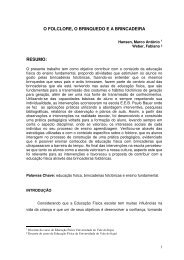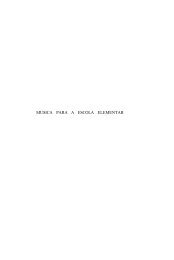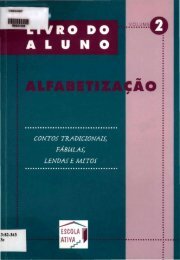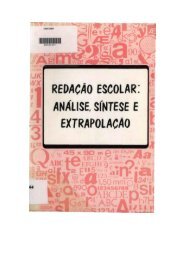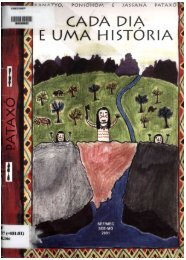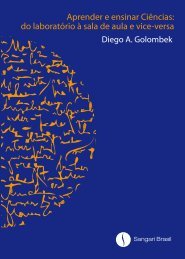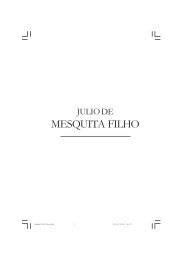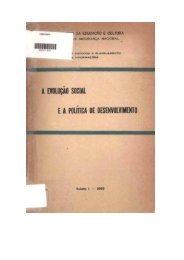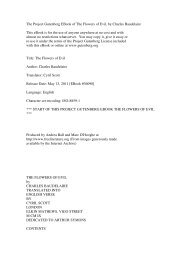A History of English Literature
A History of English Literature
A History of English Literature
Create successful ePaper yourself
Turn your PDF publications into a flip-book with our unique Google optimized e-Paper software.
much investigation we can say <strong>of</strong> the tribes and localities which appear in<br />
it only that they are those <strong>of</strong> the region <strong>of</strong> Scandinavia and Northern<br />
Germany. As to date, poems about a historical Beowulf, a follower <strong>of</strong><br />
Hygelac, could not have existed before his lifetime in the sixth century,<br />
but there is no telling how far back the possibly mythical elements may go.<br />
The final working over <strong>of</strong> the poem into its present shape, as has been<br />
said, probably took place in England in the seventh or eighth century; in<br />
earlier form, perhaps in the original brief ballads, it may have been<br />
brought to the country either by the Anglo-Saxons or by stray 'Danes.' It<br />
is fundamentally a heathen work, and certain Christian ideas which have<br />
been inserted here and there, such as the mention <strong>of</strong> Cain as the ancestor<br />
<strong>of</strong> Grendel, and the disparagement <strong>of</strong> heathen gods, merely show that one <strong>of</strong><br />
the later poets who had it in hand was a Christian.<br />
The genealogical introduction <strong>of</strong> something over fifty lines (down to the<br />
first mention <strong>of</strong> Hrothgar) has nothing to do with the poem proper; the<br />
Beowulf there mentioned is another person than the hero <strong>of</strong> the poem. In the<br />
epic itself we can easily recognize as originally separate stories: 1.<br />
Beowulf's fight with Grendel. 2. His fight with Grendel's mother. 3. His<br />
fight with the fire-drake. And <strong>of</strong> course, 4, the various stories referred<br />
to or incidentally related in brief.<br />
Subjects for discussion: 1. Narrative qualities, such as Movement,<br />
Proportion, Variety, Suspense. Do the style (terse and suggestive rather<br />
than explicit) and the tendency to digressions seriously interfere with<br />
narrative progress and with the reader's (or listener's) understanding? 2.<br />
Dramatic vividness <strong>of</strong> scenes and incidents. 3. Descriptive qualities. 4. Do<br />
you recognize any specifically epic characteristics? 5. Characterization,<br />
both in general and <strong>of</strong> individuals. 6. How much <strong>of</strong> the finer elements <strong>of</strong><br />
feeling does the poet show? What things in Nature does he appreciate? His<br />
sense <strong>of</strong> pathos and humor? 7. Personal and social ideals and customs. 8.<br />
The style; its main traits; the effect <strong>of</strong> the figures <strong>of</strong> speech; are the<br />
things used for comparisons in metaphors and similes drawn altogether from<br />
the outer world, or partly from the world <strong>of</strong> thought? 9. The main merits<br />
and defects <strong>of</strong> the poem and its absolute poetic value?<br />
Written discussions may well begin with a very brief outline <strong>of</strong> the story<br />
(not over a single page).<br />
3. Above, chapter II. One day.<br />
4. 'SIR GAWAIN AND THE GREEN KNIGHT' (in translation). One day.<br />
Preliminary, pages 57-58 above. The romance combines two stories which<br />
belong to the great body <strong>of</strong> wide-spread popular narrative and at first had<br />
no connection with each other: 1. The beheading story. 2. The temptation.<br />
They may have been united either by the present author or by some<br />
predecessor <strong>of</strong> his. Subjects for discussion: 1. Narrative qualities--Unity,<br />
Movement, Proportion, Variety, Suspense. Is the repetition <strong>of</strong> the hunts and<br />
<strong>of</strong> Gawain's experience in the castle skilful or the reverse, in plan and in<br />
execution? 2. Dramatic power--how vivid are the scenes and experiences? How<br />
fully do we sympathize with the characters? 3. Power <strong>of</strong> characterization<br />
and <strong>of</strong> psychological analysis? Are the characters types or individuals? 4.<br />
Power <strong>of</strong> description <strong>of</strong> scenes, persons, and Nature? 5. Character <strong>of</strong> the<br />
author? Sense <strong>of</strong> humor? How much fineness <strong>of</strong> feeling? 6. Theme <strong>of</strong> the<br />
story? 7. Do we get an impression <strong>of</strong> actual life, or <strong>of</strong> pure romance? Note<br />
specific details <strong>of</strong> feudal life. 8. Traits <strong>of</strong> style, such as alliteration<br />
and figures <strong>of</strong> speech, so far as they can be judged from the translation.<br />
5. THE PERIOD OF CHAUCER. Above, pages 59-73. One day.





